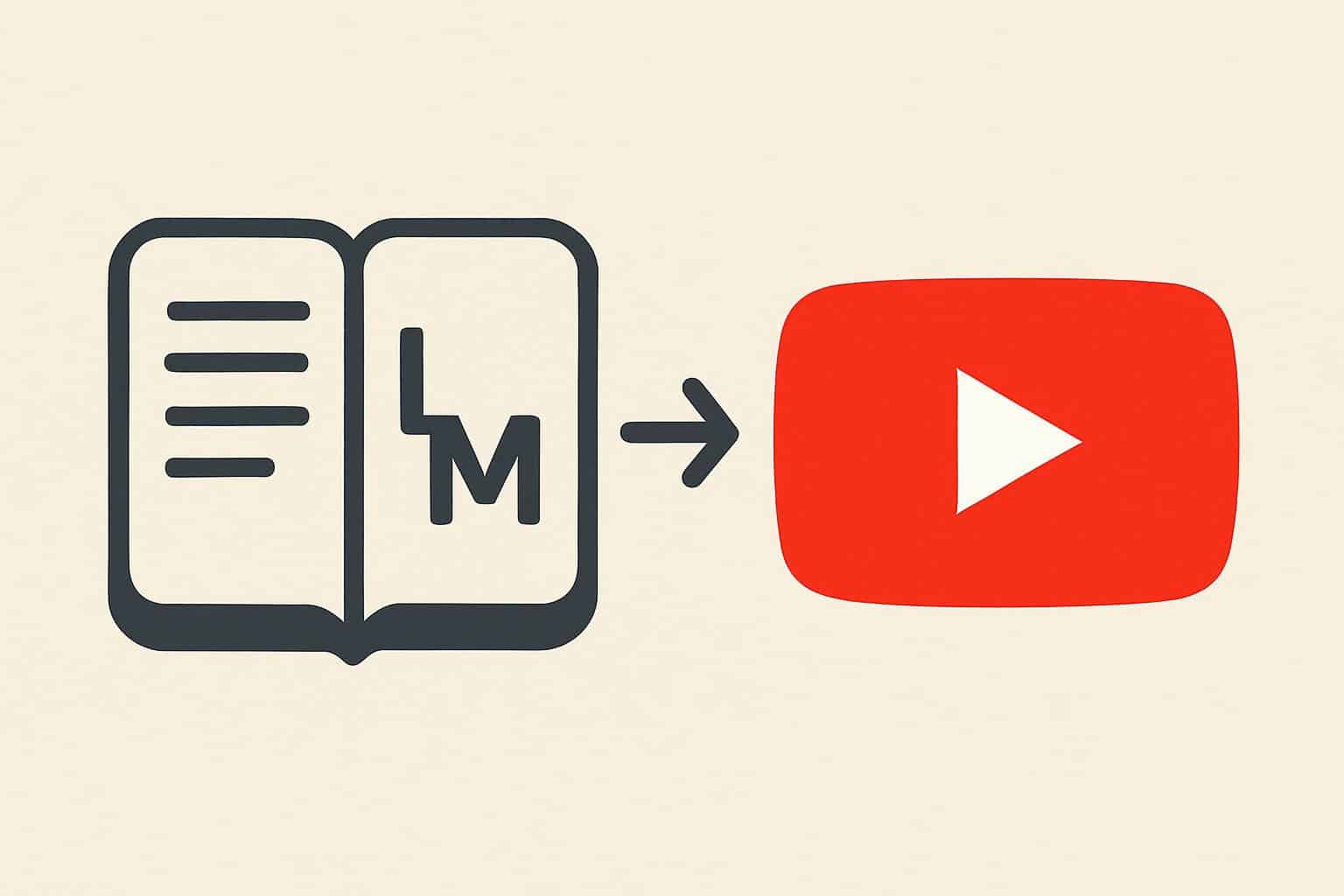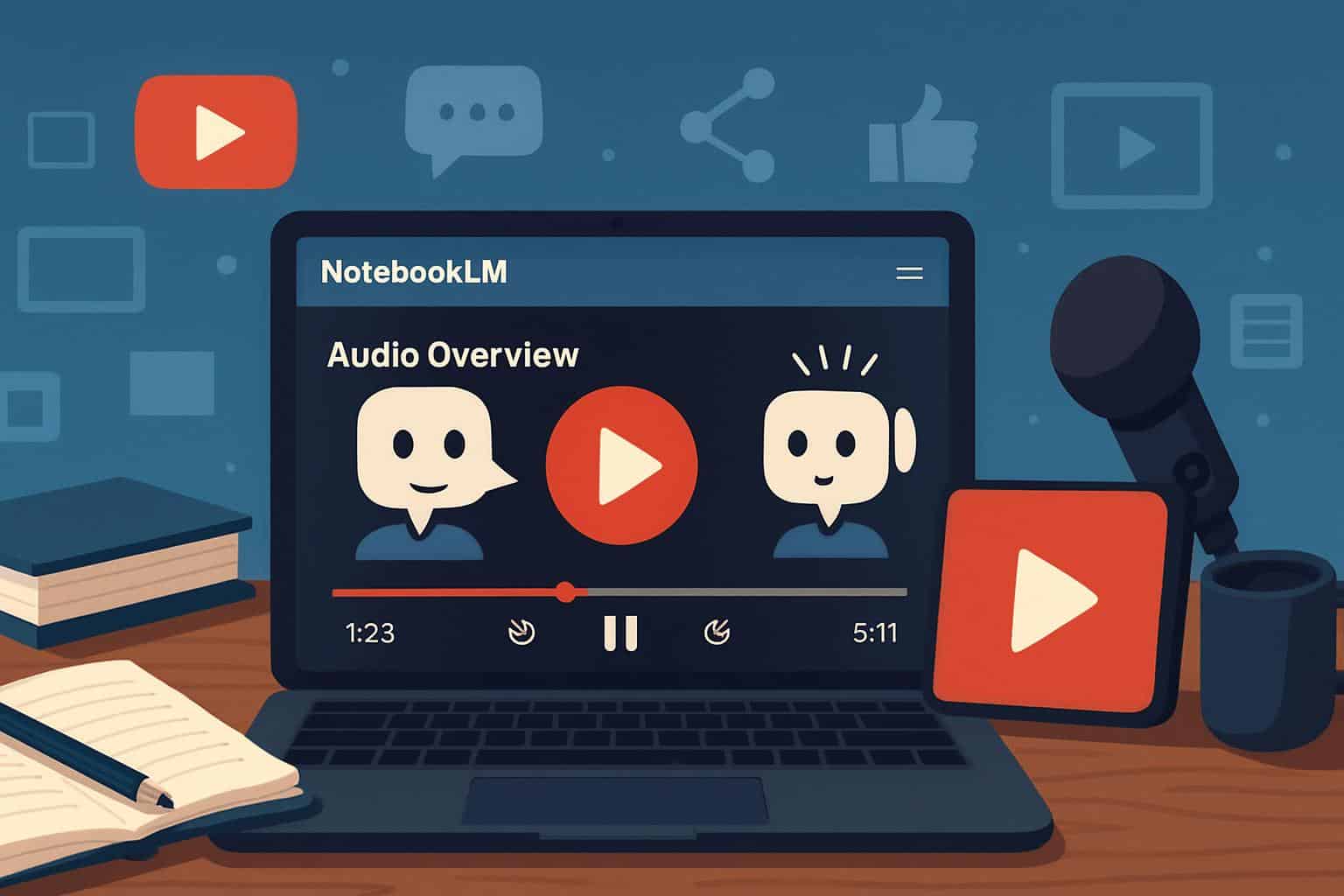NotebookLM is that rare AI tool that really does change the way people study, research and consume complex material. Its standout feature, Audio Overview, distills dense sources into a conversation-based, podcast-style summary with two AI hosts. It’s smart, time-saving and surprisingly fun. But to become a daily habit for millions, this promising format needs to take on some of the battle-tested concepts behind YouTube’s indispensability.
YouTube’s triumph isn’t scale but the frictionless mechanics around consuming, saving and sharing content — as well as discussing it. Bringing those basics to Audio Overview would take NotebookLM “from a helpful assistant” to “a must-have platform.”

Audio Overview Needs YouTube-Grade Playback
The first patch is easy to come by: gradual progress. A paused Audio Overview should pick back up where you left off, or approximately so if you are doing this on multiple devices. YouTube has spoiled us, and the gapless state sync is table stakes for media apps of now — learning tools should have continuity like this too, especially given how often users might dip in one window and out another between commutes, chores or study sessions.
Then, introduce pro-level playback controls: variable speeds, skip-forward/back jumps, auto-chaptering and a sleep timer. Chapters should be automatically “sourced” from the source’s architecture (headings, abstracts, even section turnovers) and include not just page numbers but also time-coded references so that each idea in the chapter can be traced back to its original location. That allows learners to immediately verify assertions and trust in the summary layer. It’s a no-brainer to enable background play, offline downloads and fine scrubbing on mobile.
Social Features Must Emulate YouTube’s Network Effects
Audio Overview is great but it’s locked in each notebook. It requires a sharing model to be granular and safe: public links for a single audio track, optional timestamp sharing, embeddable players. This brings intelligence out of silos, allowing teachers, researchers and creators to share learning-grade summaries without sharing their entire notebooks.
Casual conversation should follow the audio. Lightweight annotations with owner toggling between private and public would support peer review, classroom feedback, and expert annotations. YouTube’s network effects are not just about reach; they’re about discourse. Three-quarters of Americans use the social media platform, more than double the share that uses Twitter or Reddit, according to a survey conducted this year by the Pew Research Center. Social interaction scales attention. Incorporating that social fabric into learning audio would reinforce the effect of NotebookLM.
Massive Discovery And Navigation That Feels Like Video
People go back to places that help them discover something even better next. Audio Overview might have additional “Next Up” cues, Listen Later and Playlists that can group multiple sources together for a single guided session. People should understand why a piece is being recommended (common sources, topic proximity or earlier saves) and be able to tune the system toward exam prep or deep research versus quick briefs.

Notebook-level profiles would help, too. A public profile might have curated playlists — “Machine Learning 101,” “EU AI Act Deep Dive,” “Climate Policy Briefs” — with role-based counterparts for students, analysts or policymakers. It’s like channels and subscriptions for learning; it is impactful work that allows educators and institutions a lasting home for their content.
Transparency, Rights, and Safety at Platform Scale
Turning private notes into shareable audio raises tricky issues. Audio Overviews ought to contain source attribution; time-stamped references; and some statement of limitations. If a source is behind a paywall or licensed, sharing should respect rights by default — automatically providing for the release to the public of both redacted and full versions, only that it would be limited to controlled access. Investigating and regulating this vast textual blitzkrieg is beyond the capabilities of any individual human, but a Content ID–type system for documents could identify copyrighted works and apply the appropriate rules automatically.
Safety also matters. Because AI voices have the ring of authority, the platform must show visible provenance metadata — what sources were used to generate audio, when it was created and whether content has been updated after source data changes. Educational practitioners and institutes will require audit trails. Moderation tools, in the form of comment filters and owner-approved Q&A, can help keep low-quality noise from hijacking productive discussion.
From a helpful feature to a daily learning way of life
And that’s a larger strategic opportunity here. Google itself just rolled podcasts into its music app ecosystem, meaning power users might be left looking for a dedicated learning audio player. Audio Overview could be that: a dedicated app for study-level listening along with chapters, citations and shareable summaries that snap into classrooms, research labs and knowledge teams.
There is nothing exotic about any of these requests. Restarting right where you left off, sharing a particular episode, commenting with controls, seeing sources while listening — those are known patterns at YouTube scale. Bring them to NotebookLM, and the product ceases to be “an AI summarizer” and becomes where modern learning takes place. That’s the leap from novelty to necessity.

